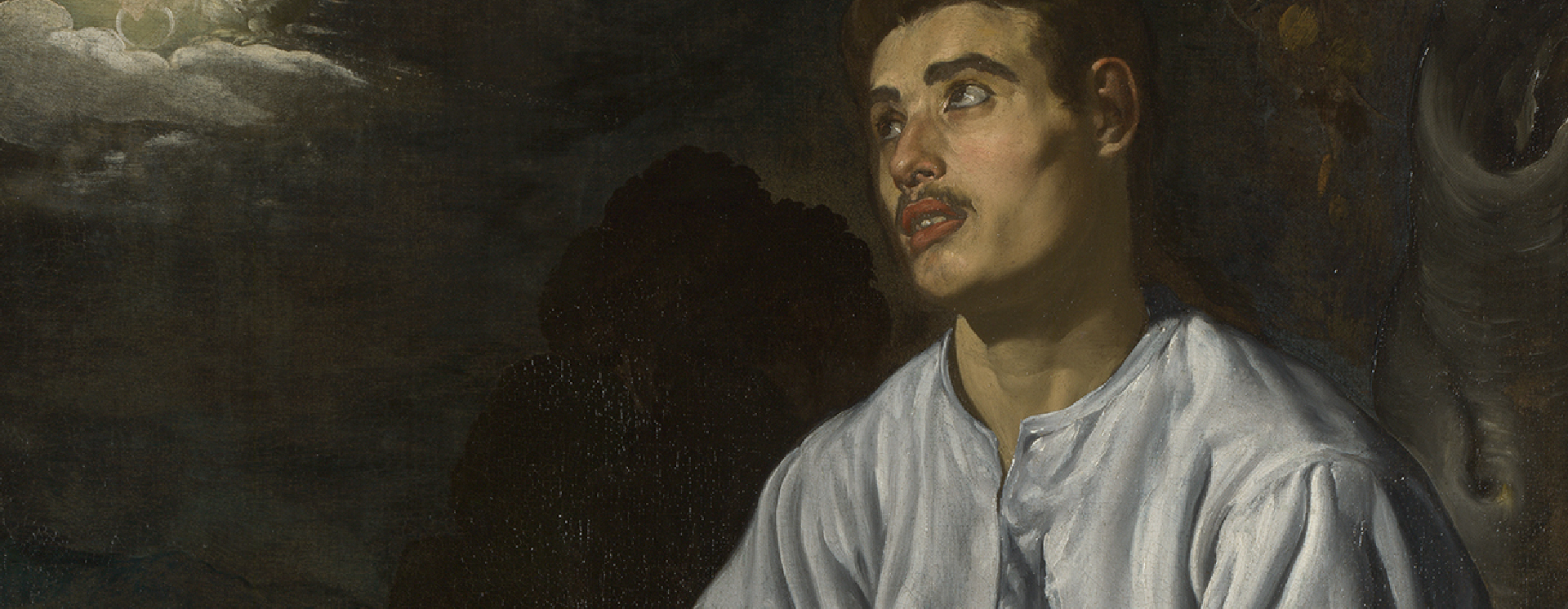Velázquez. “A great sign”
10 May 2024 will mark the bicentenary of the foundation of the National Gallery in London, one of the world's most important and prestigious museum institutions. Within the scope of these celebrations an exhibition-dossier entitled The Last Caravaggio dedicated to Caravaggio's Martyrdom of Saint Ursula, on loan from the Gallerie d'Italia in Naples, will be set up in a single room of the museum.
In the spirit of reciprocity, the Gallerie d'Italia - Napoli will receive a special loan from the London museum: two early paintings by Diego Velázquez for the Calced Carmelite Order in Seville. The paintings (Immaculate Conception and Saint John the Evangelist on the Island of Patmos) will be displayed in the room dedicated to the first naturalistic season between Rome and Naples, where the Martyrdom of Saint Ursula is usually on display, as part of the exhibition entitled L'Ospite illustre (The Illustrious Guest), the programme of exchanges with important Italian and foreign museums that has been running at our museum venues in Turin and Vicenza for some time now.
The special loan of two early masterpieces by Velázquez provides inspiration for reconsideration of the Sevillian master's brief stays in Naples and, more generally, of the figurative exchanges - often evoked by studies but actually very fleeting - between Spanish and Neapolitan art in the first half of the 17th century. The presence of Velázquez in the capital of the Viceroyalty took place during the master’s two visits to Italy: the first, to study, between the summer of 1629 and the end of 1630; the second, longer and officially linked to his role as superintendent of the works of art in the royal residences, between January 1649 and June 1651.
The presence of these two paintings from the master's early production in Seville will make it possible to retrace the echoes in the Andalusian city of Caravaggio's naturalism, also mediated by the relationship between the local aristocracy and Naples, emphasising the importance of the importation to Seville of works by Caravaggio and his followers to the training of the artist. They also recall the Sevillian master's stays in the capital of the Viceroyalty.
Next to the works of the Sevillian master, will also be exposed a version of the Immaculate by Battistello Caracciolo, probably around the same time, conserved in the church of the Natività della Beata Maria in Roccadaspide, in Cilento region, and the stunning Vergine Immaculate Conception of Paolo Finoglio, from the Franciscan convent of San Lorenzo Maggiore in Naples.
